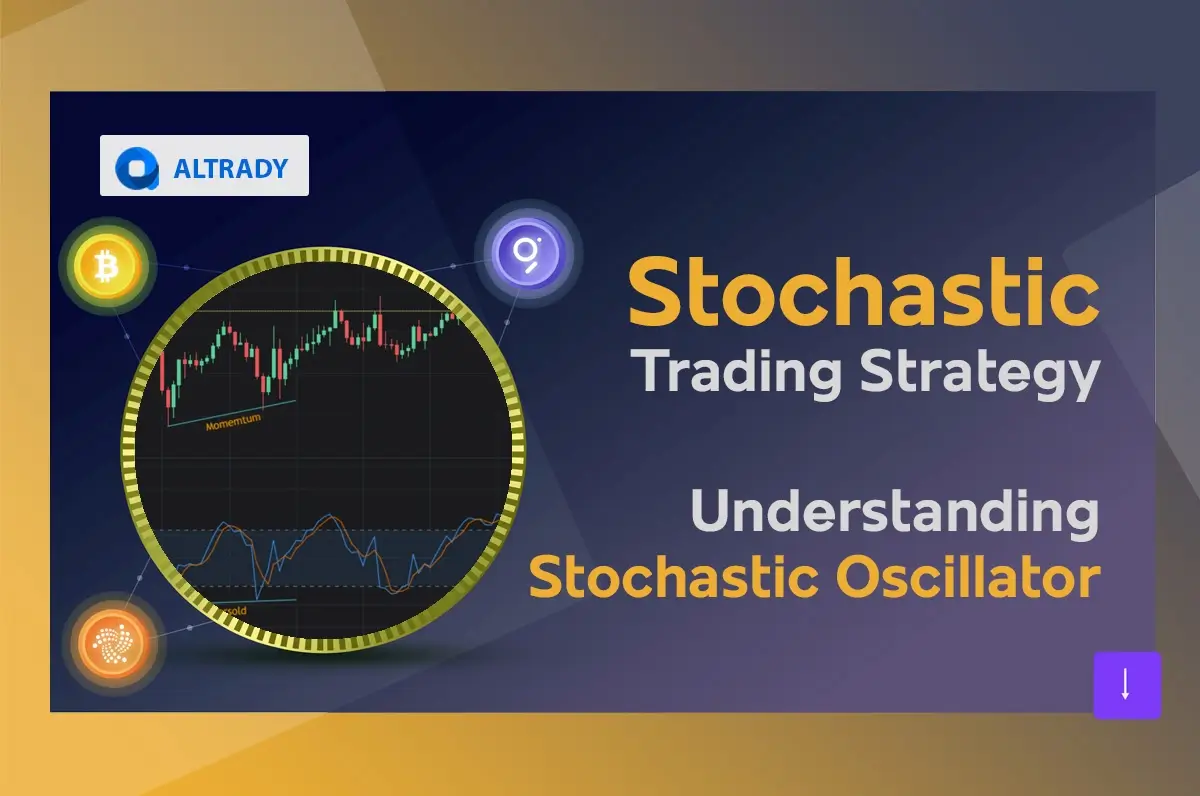Black Friday is loading…
Get 40% off with Altrady’s yearly plan and take the lead.
.svg)
.svg)
.svg)
.svg)
.svg)
.svg)
.svg)
.svg)
.svg)
.svg)
.svg)
.svg)
.svg)

In the case of cryptocurrency trading, The Stochastic Oscillator has earned a respected place despite its susceptibility to misleading signals in volatile conditions, a typical situation in digital asset markets.
This indicator was developed in the late 1950s, and it compares the most recent closing price of an instrument in the financial markets to its high-low range over a specified period.
Through the following sections, we will overview some concepts and dive deep into others, such as the components and the calculation formula, to a satisfactory understanding of the Stochastic Oscillator.
The Stochastic Oscillator is a momentum indicator extensively used for technical analysis. It can help crypto traders determine whether a digital asset is quoting in overbought or oversold conditions. It also helps traders identify potential trend reversals and make informed decisions about buying or selling assets.
The oscillator works on the assumption that prices tend to close near the boundaries of their recent range in trending markets, making it a valuable tool for assessing market momentum.
In the context of cryptocurrency trading, it is vital to understand the market's unpredictable nature and potential asset volatility. Such facts often lead to sharp prìce movements that affect the performance of most indicators, and the Stochastic is not an exemption.
Effectively using this indicator can suit the expectations of different trading styles and strategies, such as:
Concerning the Stochastic Oscillator, there are two key components known as the %K and %D lines. Let's take a look at those lines:
These two lines move towards each other, with crossovers between them often indicating potential bullish or bearish signals, making the stochastic oscillator an essential tool for traders who rely on technical analysis to improve market confirmations for timing exit and entry points.

The formula working behind this oscillator involves several steps to calculate the stochastic oscillator, starting with the current closing price.
Let's break down the formula, specifically expressed as follows:
|
|
Where: The Lowest Low and Highest High are resolved over a specified period, allowing traders to gauge the asset's price relative to its historical performance. |
This calculation method allows the oscillator to generate values typically ranging from 0 to 100, with oscillations above 80 indicating overbought conditions and indications below 20 meaning oversold conditions.
By understanding this calculation methodology, traders can effectively utilize the stochastic oscillator to enhance their trading strategies and improve decision-making.
The stochastic oscillator offers several advantages that make it a valuable tool for traders aiming to identify potential trend reversals and overbought or oversold conditions.
One of the primary benefits of using this momentum indicator is:
To provide insights into market momentum |
To assist traders in identifying turning points |
By gauging these conditions, traders can better anticipate price movements and make informed trading decisions. For instance, it can lead to more accurate market entries and exits.
Despite its advantages, traders must be cautious of common pitfalls and misinterpretations when using the stochastic oscillator.

Many traders can experience hard times interpreting the indicator as a consequence of relying exclusively on:
By being aware of these common mistakes, traders can improve their accuracy and overall profitability when utilizing the stochastic oscillator in their strategies.
Understanding these potential pitfalls is crucial for effective trading, as depending only on this indicator may induce traders to overlook other influential market factors. In this sense, to maximize the effectiveness of the stochastic oscillator in crypto trading, it is essential to take into account additional considerations for its use.
One essential procedure to consider is integrating the oscillator with other technical indicators, such as moving averages or volume analysis, to assemble a more comprehensive and broader focus of the implemented trading strategy. This approach allows traders to confirm signals and reduce the likelihood of inaccurate interpretations.
Furthermore, traders should pay attention to the specific variables and settings they choose to set the indicator, as these can significantly affect the oscillator's performance and responsiveness to market fluctuations, making it slower or faster, according to their trading goals and market noise tolerance.
By adhering to these considerations, traders can enhance their ability to identify accurate market turning points while improving their decision-making process in their trading endeavors.
Overall, the stochastic oscillator is a powerful technical analysis indicator that can help traders overcome the complexities of crypto market behavior, making it beneficial for novice and experienced traders.
As we learned through this article, the indicator's formula and components are streamlined to follow the price fluctuations, gauging the relation to their low/high range.
Would you like to start using the Stochastic Oscillator on free paper trading? Altrady has a wide range of options to start with this indicator along with smart trading features, grab a free trial account for the next 14 days.